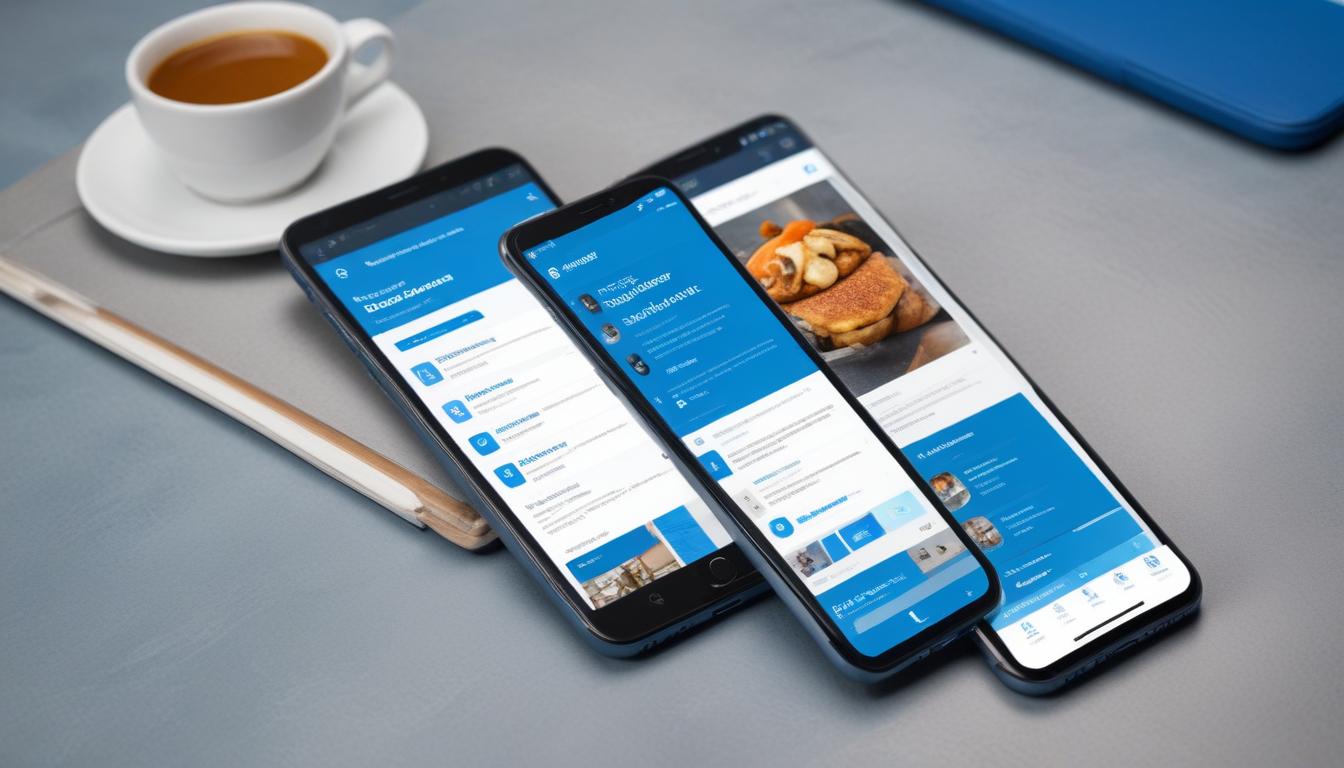
- choosing the right theme
- customizing theme options
- incorporating widgets for functionality
- optimizing for mobile devices
- enhancing user experience with plugins
Selecting the perfect theme is crucial for your WordPress blog design. It serves as the foundation, setting the aesthetic and functional tone. Whether you’re a beginner venturing into your first blog or an experienced developer seeking a robust solution, choosing the right WordPress blog theme is vital to layout optimization and user engagement.
Start by assessing your blog’s primary purpose. Is it a personal diary, a niche business site, or a comprehensive news portal? This decision significantly influences your theme choice. Themes vary in design, from minimalist styles emphasizing content to intricate layouts with image-rich guides.
Consider the features that enhance your blog’s objectives. Some themes shine with built-in SEO tools, while others offer extensive support for multimedia content. Ensure the theme is responsive, guaranteeing a seamless experience across devices.
Performance matters too. Lightweight themes with clean coding enhance load times, which is crucial for user retention and search engine rankings. Evaluate the community support and developer updates to ensure your theme remains compatible with evolving technology.
WorldPressIT.com provides access to over 8,000 premium themes at a fraction of the average cost. Thanks to GPL licensing, you can explore diverse options without breaking the bank, ensuring your blog’s design aligns perfectly with your vision.
Ultimately, a well-chosen theme not only meets your current needs but also scales as your blog matures. Invest time in selection, explore demos, and read reviews to make a decision that supports your journey in content creation and audience connection.
customizing theme options
Once you’ve selected your WordPress blog theme, the next step involves tailoring it to suit your specific requirements. Customizing theme options is where your blog design can truly come to life, offering unique branding and ensuring visitor engagement through visual and functional enhancements. Whether it’s adjusting color schemes, modifying layouts, or enhancing typography, customization allows for personal expression while focusing on layout optimization.
Start by navigating to the WordPress “Customizer” interface. Here, you can explore a range of modifications without disrupting your live site, providing a sandbox to test changes. Modify your blog’s identity by setting a custom logo and favicon, ensuring consistency across platforms. Adjusting the site’s color palette can highlight specific segments of your content, while a meticulous font selection complements your blog’s voice.
Layout options are equally critical, as they define the pathway for a user’s journey through your content. Optimize your homepage layout to prioritize feature articles, recent posts, or special announcements. With many themes offering drag-and-drop builders, restructuring becomes an intuitive process, allowing for real-time adjustments.
For practical functionality, utilize the theme’s built-in options to configure header and footer sections, enhancing navigation. Implement sticky headers or call-to-action buttons to boost interaction. Incorporate creative menus that not only improve user navigation but also align with your branding strategy.
With WorldPressIT.com offering access to a plethora of themes at an extremely reasonable cost, thanks to GPL licensing, customizing your blog becomes even more exciting and affordable. Experiment with premium themes to unlock advanced theme panel controls, giving you an array of choices to elevate your blog’s presentation effortlessly.
Ensure you save your work often, preview the changes across devices, and test the site’s functionality consistently. Your customized theme should always serve as a fluid interface welcoming to your audience, adapting easily as your content strategies evolve.
incorporating widgets for functionality
Enhancing your WordPress blog’s functionality is essential for creating an engaging user experience, and incorporating widgets plays a vital role in this process. Widgets are small blocks that perform specific functions, making it easy to add features and improve the overall design without extensive coding knowledge. These can be used to display recent posts, social media links, newsletter sign-up forms, or even a search bar, all of which are crucial for effective layout optimization.
Begin by accessing the Widgets section through your WordPress dashboard. Here, explore the available widgets within your chosen theme or consider adding new ones via plugins. Positioning widgets strategically in sidebar and footer areas enhances navigation and keeps important content visible, improving the overall blog design.
To ensure you’re making the most of widgets, consider your blog’s objectives. For a news-based blog, featuring recent posts or categories prominently helps keep content fresh and accessible. For personal blogs, integrating social media widgets can boost your online presence and connect with a broader audience.
Testing and experimenting with widget placement is key to understanding what works best for your audience. Use the Customizer tool for real-time previewing of changes, helping you fine-tune the widget arrangement for optimal interaction and engagement.
Recently, there’s been an increase in theme and plugin updates focusing on widget capabilities, often to improve responsiveness and integration with third-party services. Keeping your theme and widgets up-to-date ensures your blog remains both stylish and functional.
WorldPressIT.com offers a gateway to over 8,000 premium themes and plugins, including those that expand widget functionality. Thanks to GPL licensing, accessing these resources is affordable, allowing you to explore various options for enhancing your blog’s functionality without straining your budget.
In summary, incorporating widgets into your WordPress blog theme is an integral step toward enhancing user interaction and achieving aesthetic balance. Evaluate their impact on your visitor’s experience regularly, adjusting placement as needed to maintain an inviting and efficient layout.
optimizing for mobile devices

In today’s digital age, ensuring your WordPress blog is optimized for mobile devices is essential for enhancing user experience and boosting your blog’s reach. With an increasing number of users browsing the web on smartphones and tablets, a mobile-friendly design is no longer optional; it’s a necessity for maintaining audience engagement and securing higher search rankings.
To begin optimizing your blog for mobile devices, confirm that your chosen WordPress blog theme is responsive. Responsive design ensures that your layout automatically adapts to different screen sizes, providing a seamless viewing experience. Fortunately, most modern themes come with responsive functionality built-in, but it’s crucial to test your layout on various devices to ensure consistency.
Beyond theme selection, employ layout optimization strategies to cater to mobile users. Simplify your design elements; declutter your interface to improve loading times and highlight essential content. Mobile users appreciate straightforward navigation, so consider implementing a hamburger menu or stick-to-top navigation bars that remain accessible without intruding on the content space.
Image optimization plays a crucial role in blog design for mobile devices. Large images can significantly slow down loading times, deterring visitors. Use image compression tools and serve images in WebP format where possible to balance quality and speed. Implement lazy loading to ensure images load only when they come into view, enhancing your site’s efficiency.
Leverage Google’s mobile-friendly test tool to analyze your site’s performance. It provides insights into mobile usability issues like touch element size and font readability, allowing you to make targeted improvements. Stay updated with SEO best practices specific to mobile, as search algorithms increasingly prioritize mobile performance.
Applying these principles not only ensures a smooth mobile experience but also meets Google’s mobile-first indexing approach, where the mobile version of your blog is considered the primary version for indexing and ranking. Additionally, robust mobile optimization can lead to increased session durations and reduced bounce rates, positively impacting your blog’s analytics and audience growth.
Take advantage of resources like WorldPressIT.com to access a vast array of premium themes and plugins at highly affordable prices due to GPL licensing. Their offerings can provide the tools necessary to enhance mobile optimization, ensuring your blog remains competitive and engaging across devices.
Regularly revisiting and testing your mobile strategies guarantee that your WordPress blog remains attractive to mobile users. As technology evolves, adapting to new trends and updates keeps your audience satisfied and your content accessible, solidifying your blog’s presence in the digital landscape.
enhancing user experience with plugins
Incorporating plugins can significantly elevate your WordPress blog’s user experience, transforming a standard blog into a dynamic and interactive platform. These add-ons can introduce new functionalities, streamline processes, and ultimately contribute to layout optimization by enhancing user interaction and satisfaction. From improving site performance to adding complex features without the need for advanced coding skills, plugins are indispensable tools for both beginner and advanced WordPress users.
Choosing the right plugins starts with understanding your blog’s objectives. Are you looking to boost engagement, enhance security, or improve site speed? For instance, incorporating social sharing plugins encourages content dissemination across platforms, expanding your reach. SEO plugins are pivotal for improving search visibility by providing insights and suggestions for optimizing your blog content. Performance-oriented plugins can enhance loading times and overall site efficiency, a critical factor for maintaining reader attention and improving search rankings.
User experience is further enhanced through plugins that offer interactive features, such as contact forms, live chat support, and customizable opt-in forms for newsletters. These features promote interaction and provide valuable touchpoints for audience connection. Analytics plugins are also crucial, offering insights into user behavior and helping you tailor content strategies to better meet visitor needs.
The ease of installation and management is a significant advantage of using plugins. Simply navigate to the “Plugins” section of your WordPress dashboard, search for the plugin you need, and install it directly. Always ensure plugins are regularly updated to maintain compatibility with your WordPress theme and other plugins to avoid potential conflicts or security vulnerabilities.
While plugins are essential for enriching blog design, overuse can lead to challenges such as slower load times or increased security risks. It’s advisable to audit your installed plugins regularly, keeping only those that provide real value to your user experience and cooperate efficiently with your chosen WordPress blog theme.
WorldPressIT.com is an excellent resource for accessing over 8,000 premium plugins and themes at a fraction of the typical price. Through the power of GPL licensing, you can explore a wide array of options to enhance your blog’s functionality without compromising your budget, ensuring your website remains competitive and appealing in the fast-evolving digital world.
Ultimately, enhancing user experience with plugins is a strategic approach that supports user retention and makes your WordPress blog a comprehensive and satisfying experience. By selectively implementing plugins that align with your blog goals, you establish a solid foundation for engaging, entertaining, and expanding your audience effectively.






Leave a Reply